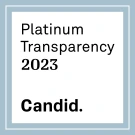By: gabriel sayegh via Medium.com
This week marks the 35th anniversary of the Anti-Drug Abuse Act of 1986, which Congress passed four months after the death of University of Maryland star forward Len Bias. The Boston Celtics had just drafted him, and it was widely reported that he died from using crack. That was wrong: Bias had been using powder cocaine and died of cardiac arrhythmia. But elected officials obsessed over crack and clamored for more punishment and more prisons, much like rabid dogs frothing at the mouth.
It was the mid-’80s and the height of the Reagan-era “war on drugs.” The laws Congress passed during that period set the tone and vision for the “tough on crime” politics that have fueled mass incarceration. And it was this 1986 law that gave us the 100-to-1 disparity in mandatory prison sentences for crack and powder cocaine — two forms of the drug that are the same pharmacologically.
But racism, political messages, and mainstream media coverage perpetuated the falsehood that crack was a uniquely dangerous drug, used mostly by Black folks, so Congress passed harsher penalties for crack. (In a drug war, facts are not important to many lawmakers or some who call themselves journalists.) The new law exacerbated the deep racism of the drug war: for years afterward, the already increasing federal prison population grew more rapidly, individual states followed suit and passed “tougher” (that is, more racist) laws, and the nation was running even faster to expand what the scholar Michelle Alexander has called the New Jim Crow.
This was also the era of “Just Say No,” Nancy Reagan’s ridiculous and dangerous propaganda campaign to “educate” kids about drugs. I vaguely remember seeing the news anchor Dan Rather discussing Bias’s death when I was 10. But what I remember more vividly are the assemblies in my elementary school gymnasium, where the principal, Mrs. Busher, extolled the “Just Say No” talking points as if reciting scripture. A police officer in full uniform, including a handgun, would often join the assemblies or give “Just Say No” presentations in our classrooms, urging us to inform the authorities if we knew anyone using drugs, including our parents. Public service announcements interrupted our cartoons on TV, pelting us with these messages over and over again.
Many kids my age had parents who used drugs or had used them, especially cannabis, as our parents had come up in the late ’60s and ’70s, before the drug war was in full swing. We knew that people didn’t descend into madness after smoking a joint. But through “Just Say No,” we were being recruited to snitch on community members and our own families. This too was highly racialized; it was also in the ’80s and ’90s when Black mothers were routinely blamed for the problems of capitalism and poverty, and were ruthlessly criminalized, regardless of whether they used drugs. But the message was clear, even to our white working-class community: if anyone needed help for their drug use, why would they seek it if they would be ostracized, likely arrested — and maybe even lose their kids?
Most of us knew that “Just Say No” was absurd, and we focused our natural preteen abilities for ridicule on the dumb program. In 1988, I won the district-wide “Just Say No” Essay Contest for sixth graders. Mrs. Busher gleefully presented a certificate to me at one of our assemblies. My essay was a joke, a made-up story about a kid who used drugs and then died. I had simply — and outrageously — followed the Just Say No script, and they bought it. My friends and I laughed in 12-year-old triumph. What the slogan and campaign taught us was that the authorities were lying to us and could easily be duped with their own bullshit.
I reflect on that period as one when many adults in the country — especially white people — were in the grips of a kind of madness, and we kids watched with a mix of amusement and confusion. The country isn’t free from the grip of this drug-war madness yet, and we’re barely starting to confront the legacy of the racism that gave rise to that war.
Through years of hard, persistent work, community and advocacy groups nationwide have won important reforms at the local and federal level, including some rollbacks to the awful Anti-Drug Abuse Act of 1986, with other potential changes on the horizon. And many of the lawmakers who supported harsh penalties in the ’80s and ’90s have acknowledged that the drug war approach was wrong; one of them is now president of the United States.
But we still need to end this war and repair the harms it has caused, by decriminalizing drug possession and expanding the public health infrastructure (as Oregon voters did recently), passing universal health care, creating a safer drug supply, providing real drug education for young people, and squarely confronting our history of racism. We’ve got a lot of work to do, and fortunately, today’s reform movements are building the momentum needed to win.

